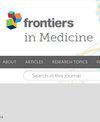摘要
背景:阿尔茨海默病(AD)是一种广泛的神经退行性疾病,通常伴有多种并发症,大大增加了患者的死亡风险。年龄调整后的夏尔森合并症指数(aCCI)是衡量患者合并症负担的重要临床工具,与死亡率和预后密切相关。本研究旨在利用MIMIC-V数据库以及各种回归和机器学习模型,筛选和验证与aCCI密切相关的特征,为AD患者的个性化管理提供理论依据:研究数据来源于MIMIC-V数据库,该数据库包含AD患者的详细临床信息。研究采用多元逻辑回归、LASSO 回归、随机森林、支持向量机(SVM)和极梯度提升(XGBoost)模型筛选与 aCCI 显著相关的特征因素。通过比较模型性能,评估每种方法的分类能力和预测准确性,最终选择最佳模型构建回归模型和提名图。模型性能通过分类准确性、净收益和稳健性进行评估。特征选择结果通过回归分析进行了验证:多个模型在对 aCCI 患者进行分类时表现良好,其中使用 LASSO 回归筛选特征因子构建的模型表现最佳,分类准确率和净收益最高。LASSO 回归确定了以下 11 个与 aCCI 密切相关的特征:年龄、呼吸频率、碱过量、葡萄糖、红细胞分布宽度 (RDW)、碱性磷酸酶 (ALP)、全血钾、血细胞比容 (HCT)、磷酸盐、肌酐和平均血红蛋白 (MCH)。根据这些特征因子构建的柱状图可以直观地预测出高 aCCI 概率的患者,为临床提供了便捷的工具:本研究结果表明,通过 LASSO 回归筛选出的特征具有最佳预测性能,可显著提高 AD 患者 aCCI 相关合并症的预测能力。基于该特征因子构建的柱状图为AD患者的个性化管理和精准治疗提供了理论指导。Background: Alzheimer's disease (AD) is a widespread neurodegenerative disease, often accompanied by multiple comorbidities, significantly increasing the risk of death for patients. The age adjusted Charlson Comorbidity Index (aCCI) is an important clinical tool for measuring the burden of comorbidities in patients, closely related to mortality and prognosis. This study aims to use the MIMIC-V database and various regression and machine learning models to screen and validate features closely related to aCCI, providing a theoretical basis for personalized management of AD patients.
Methods: The research data is sourced from the MIMIC-V database, which contains detailed clinical information of AD patients. Multiple logistic regression, LASSO regression, random forest, Support Vector Machine (SVM), and Extreme Gradient Boosting (XGBoost) models were used to screen for feature factors significantly correlated with aCCI. By comparing model performance, evaluating the classification ability and prediction accuracy of each method, and ultimately selecting the best model to construct a regression model and a nomogram. The model performance is evaluated through classification accuracy, net benefit, and robustness. The feature selection results were validated by regression analysis.
Results: Multiple models have performed well in classifying aCCI patients, among which the model constructed using LASSO regression screening feature factors has the best performance, with the highest classification accuracy and net benefit. LASSO regression identified the following 11 features closely related to aCCI: age, respiratory rate, base excess, glucose, red blood cell distribution width (RDW), alkaline phosphatase (ALP), whole blood potassium, hematocrit (HCT), phosphate, creatinine, and mean corpuscular hemoglobin (MCH). The column chart constructed based on these feature factors enables intuitive prediction of patients with high aCCI probability, providing a convenient clinical tool.
Conclusion: The results of this study indicate that the features screened by LASSO regression have the best predictive performance and can significantly improve the predictive ability of aCCI related comorbidities in AD patients. The column chart constructed based on this feature factor provides theoretical guidance for personalized management and precise treatment of AD patients.

 求助内容:
求助内容: 应助结果提醒方式:
应助结果提醒方式:


